I have to admit something to you all… I have a serious problem with ordering takeout right now.
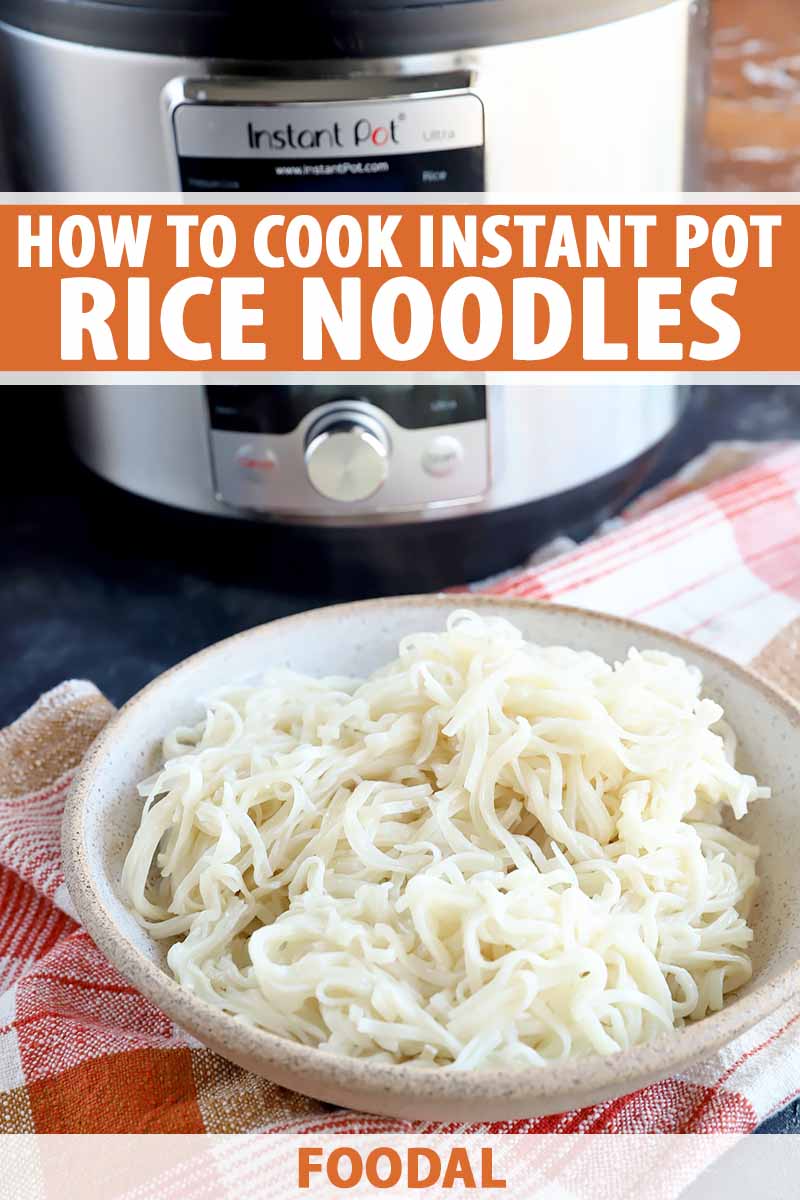
When the time comes to make dinner, there’s something in my brain that completely shuts down. It’s like I’ve used up all of my intelligence for the day, and my brain is officially done.
Is anyone else struggling with this lately?
Maybe it’s just the time of year, or it has something to do with my mood. But I think the idea of cooking dinner every single day has started to become a bit old.
After months and months of cooking day after day, I’ve kind of lost the love for it, and have reverted to my old college ways of ordering out whenever I get the chance.
Of course, this doesn’t serve my wallet well… So now I am in a tight spot, caught between needing to keep to a budget on the one hand, and a lack of desire to make meals every night for dinner on the other.
I need to figure something out to get out of this funk!
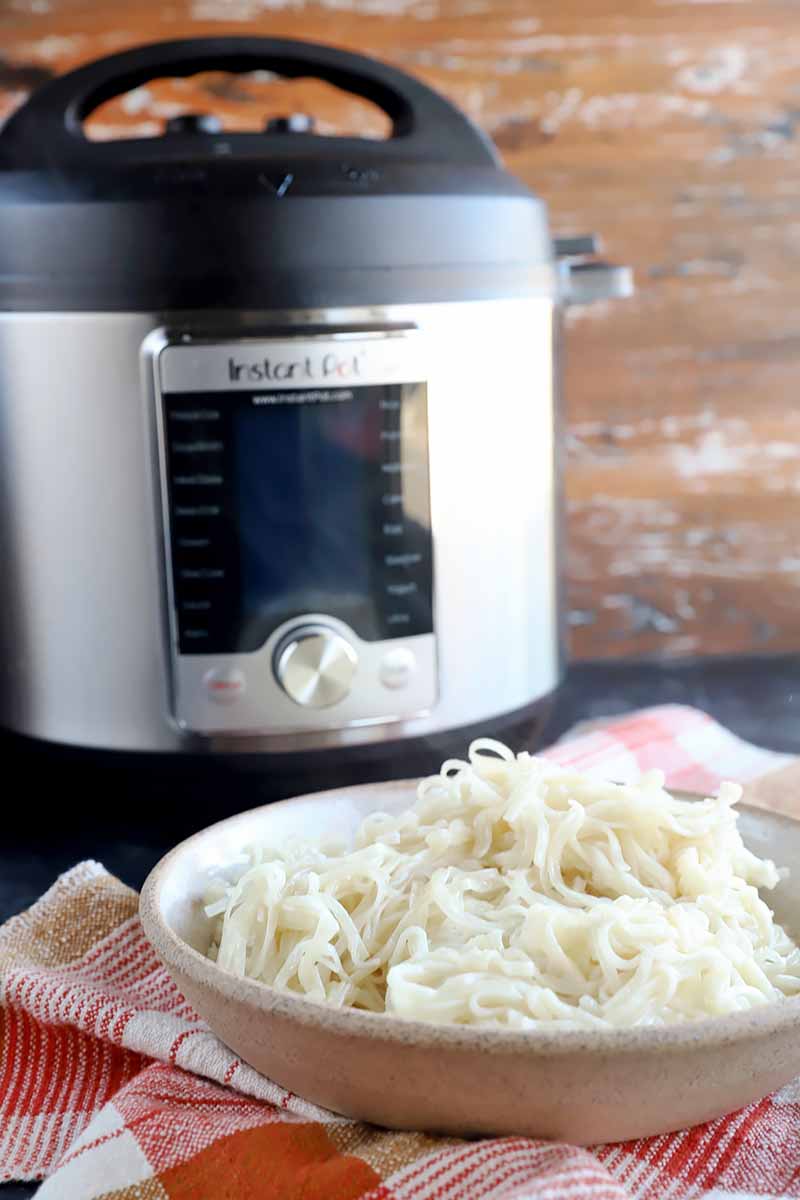
This is where making rice noodles in the pressure cooker has come into play for me and my husband. We both love the noodle dishes our local Asian restaurant makes. They have so many options and flavor combinations, from spicy to sesame, and lo mein to pad thai.
We have learned to make them all with rice noodles prepared at home, and cooking these starchy delights in the electric pressure cooker is definitely the way to go. The end result is absolute perfection every single time, and it comes together so quickly.
This has become the best takeout-fakeout option for us. Not only are we learning to make new dishes at home, but we’re able to get the starchy base ready with minimal effort, and we’re saving money as well.
Here’s everything I’ll cover in this article:
What You’ll Learn
Serving Suggestions
What’s on the menu? Maybe I can help! Try these suggestions:
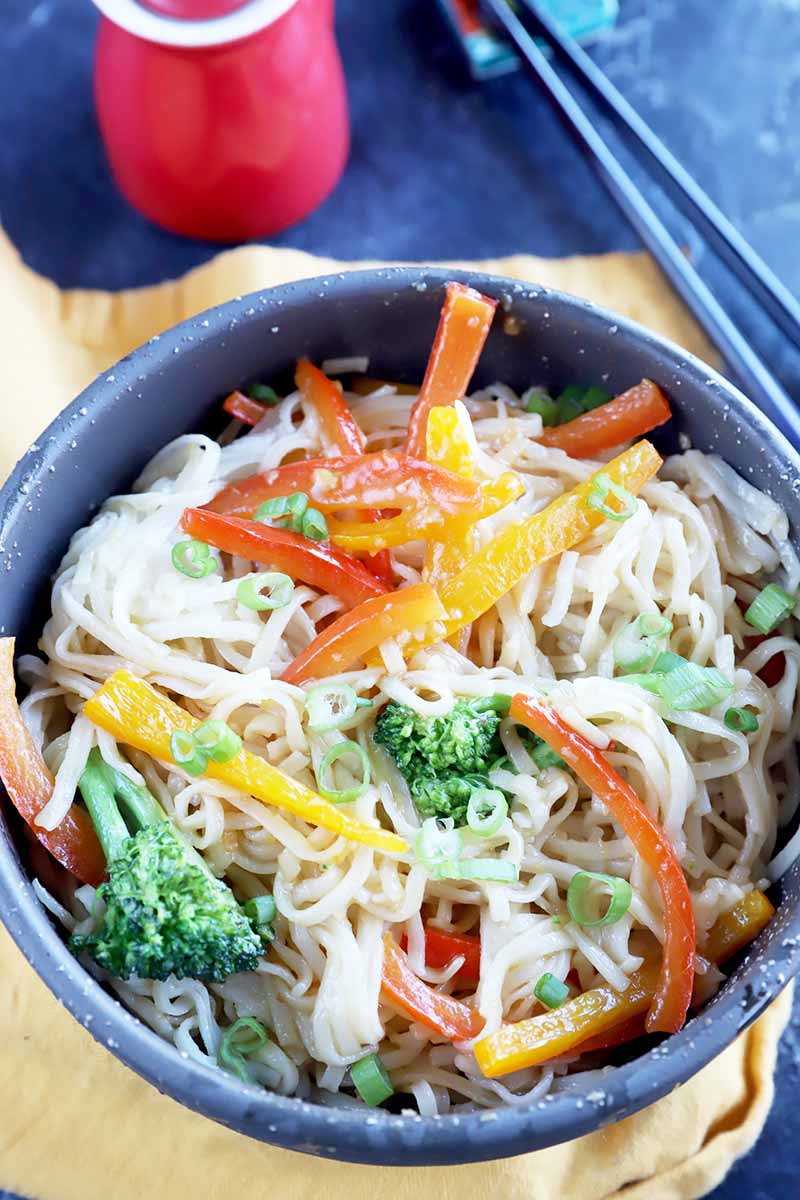
First, I adore making chili garlic noodles with these.
Essentially, I just add a couple cloves of minced garlic, as much chili garlic sauce as I can handle (about 1 tablespoon for me, or 1 to 2 teaspoons for “normal” people), and some scallions. It’s the best quick meal, especially in the middle of the day.
Another quick idea that’s similar to this that I really like are these 15-minute sesame noodles.
You could also skip the takeout and make your lo mein at home, like we’ve been doing. This beef lo mein with bell peppers is insanely simple to prepare. Swap the beef for chicken, pork, or tofu if you desire.
Whip up a batch of pad thai, like this shrimp pad thai with tamarind and peanuts, or this veggie-packed pad thai with seared tofu.
Ever had a cold noodle salad? It’s a revelation. I like to replace soba with the rice variety, and it tastes amazing. Try this recipe for soba noodle salad with ginger soy vinaigrette.
Change things up and enjoy these with your favorite curry on top instead of serving it over a grain like brown rice.
Add these to a quick pho or another Asian-style soup with notes of ginger and garlic, and a thin broth.
This should be plenty of suggestions to get you started!
How to Cook Rice Noodles in the Electric Pressure Cooker
Bowls, salads, curries, soups, and takeout made at home are just a few of the recipes screaming for the addition of these easy-to-make rice noodles.
Step 1 – Measure Ingredients
To begin, gather your ingredients and measure them out. You will need:
- 8 ounces rice noodles (regular or brown rice)
- 1 1/2 to 2 cups water, chicken, or vegetable stock
- 1 tablespoon olive oil (or peanut oil)
Determining how much liquid to use depends on whether you want the finished product to be sticky or not.
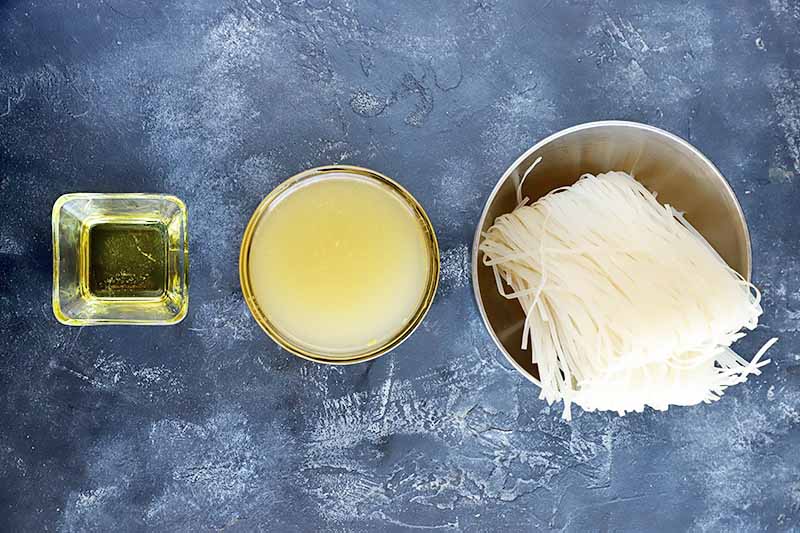
For stickier noodles, use 2 cups of water or your choice of liquid. For something less sticky – better for adding to dishes like lo mein or pad thai – use 1 1/2 cups of water.
When using stock, I like to use a low-sodium option. This gives me more freedom to adjust the sodium content of a finished dish myself.
Step 2 – Pressure Cook
Place all of the ingredients in the electric pressure cooker. Set to Manual and cook on High pressure for 3 minutes.
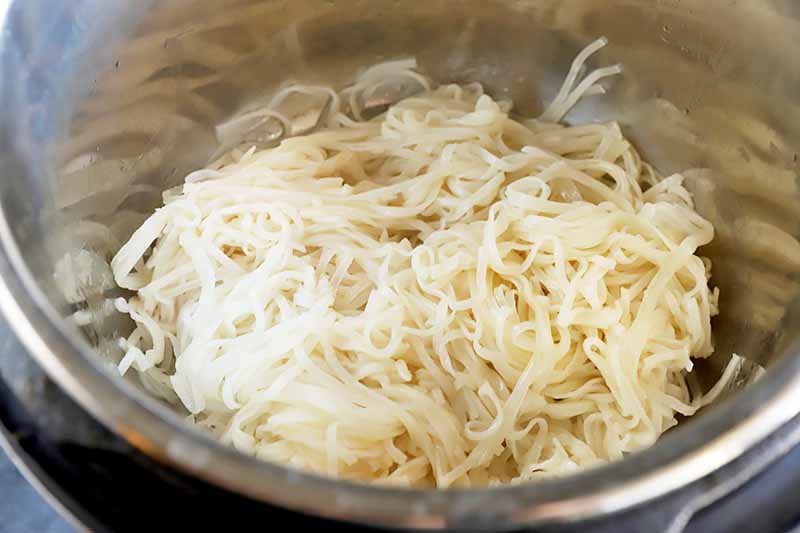
Manually release the steam as soon as the time is up.
Remove the lid. Stir well, and use as desired.
Do You Like Yours to Be More or Less Sticky?
For some, sticky noodles are a must. Others prefer that they aren’t so stuck together. In my opinion, it all depends on the dish you are making.
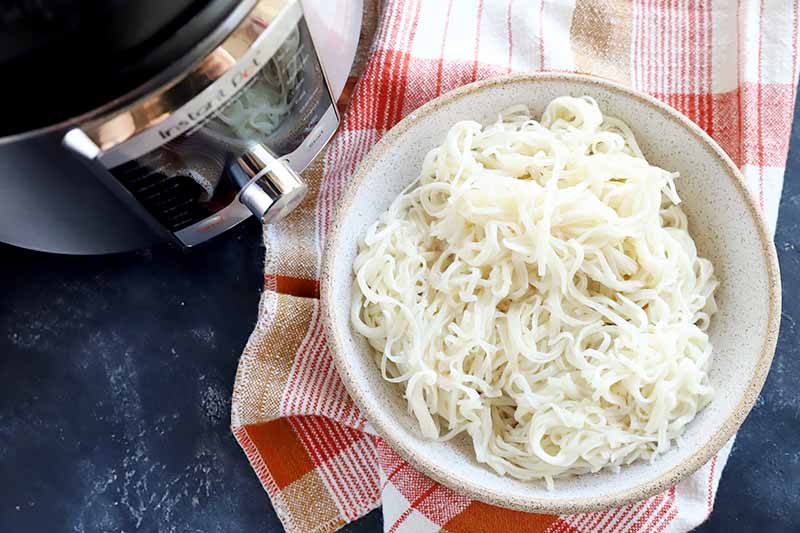
When it comes to lo mein, pad thai, or cold salads, I prefer them to be less sticky because they are easier to incorporate into the recipe. However, the stickier option is what I gravitate to when I’m making chili garlic or sesame noodles, or using them in soups.
Tell us in the comments below what your favorite recipe is to use rice noodles in. And for more types of delish carbs to cook in the electric pressure cooker, check out these how-to guides next:
Photos by Meghan Yager, © Ask the Experts, LLC. ALL RIGHTS RESERVED. See our TOS for more details.
About Meghan Yager
Meghan Yager is a food addict turned food and travel writer with a love for creating uncomplicated, gourmet recipes and devouring anything the world serves up. As the author of the food and travel blog Cake 'n Knife, Meghan focuses on unique foodie experiences from around the world to right at home in your own kitchen.

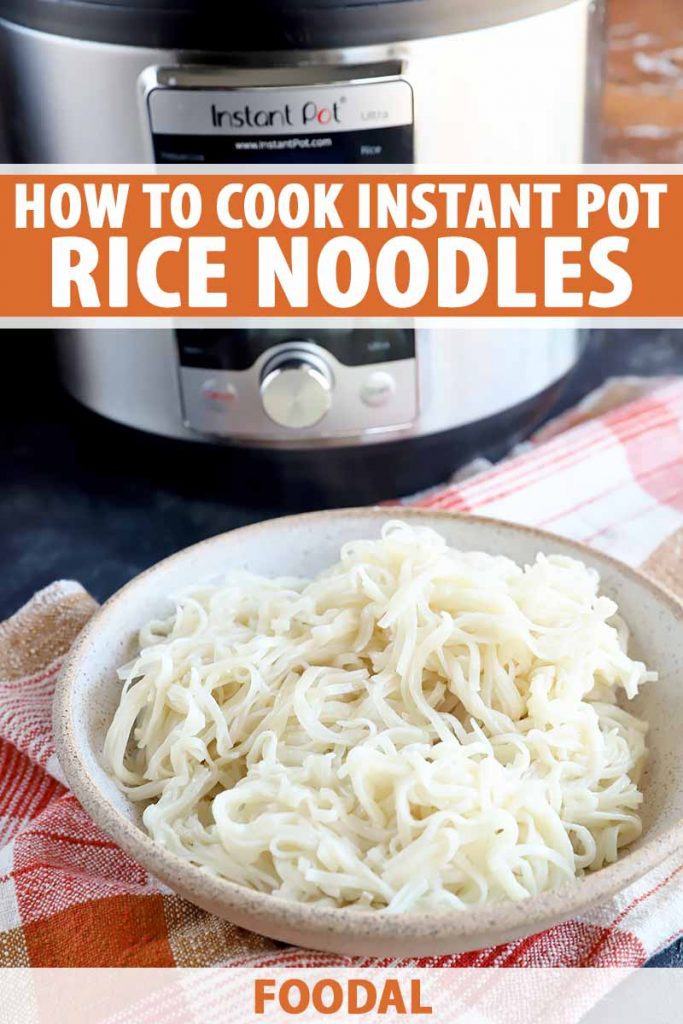

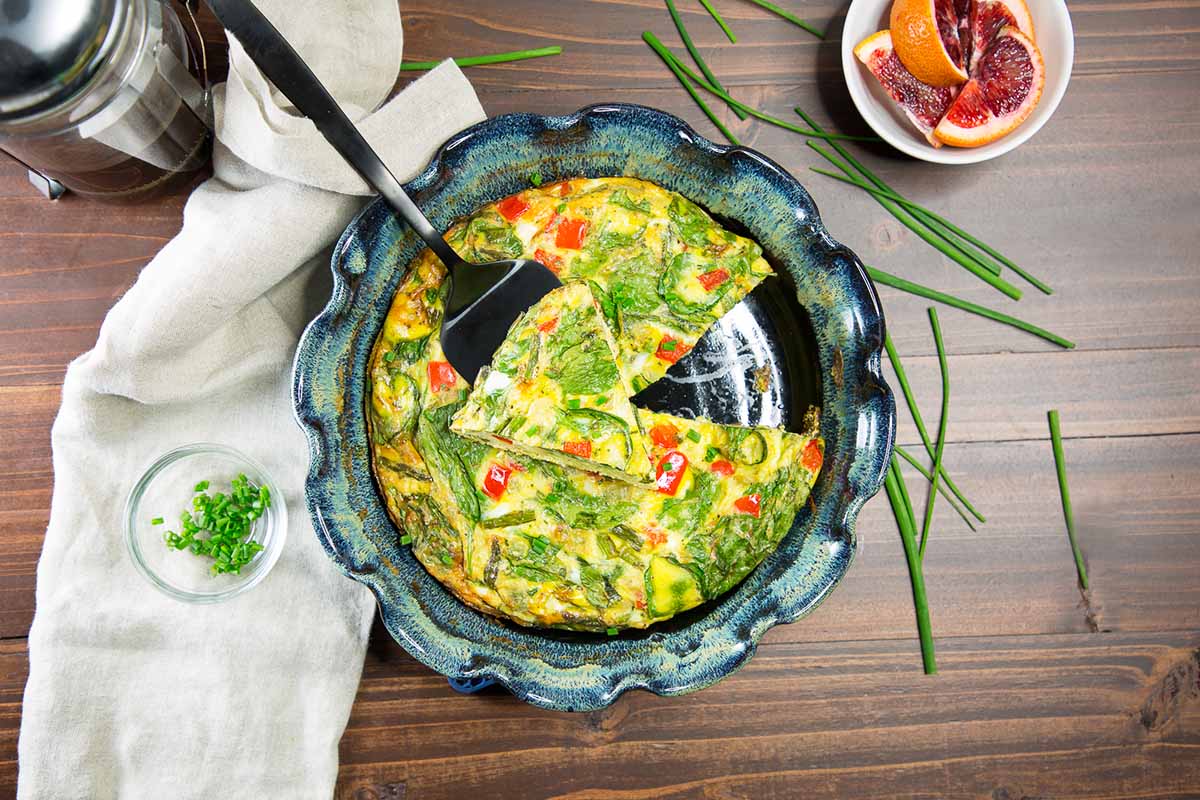

100% did not work at all.
Sorry to hear it Steve, and thanks for sharing your feedback. We’d be happy to help you to troubleshoot if you can go into a bit more detail.
100% agree with Steve! This was a TOTAL WASTE of time, money, not to mention FOOD. Followed the recipe EXACTLY and ended up with a gloopy mess that was unsalvageable. DO NOT try this method unless you like garbage noodles.
Thanks for your input! We would love to help you to troubleshoot this. Are you certain that you followed the instructions exactly? Please let us know if you have any questions!
It’s important to release the pressure and stir the pasta immediately, especially when working with rice noodles. A different size or model of pressure cooker than we used may lead to different results as well- try setting the timer for 1-2 minutes instead of 3, or use less water as recommended above.
I’ve made this numerous times and it works great! I add just enough water to cover and when done rinse them with hot water, I don’t like them sticky. It works great! Thanks for sharing!
Operator error, Karen. Steve too. Literally just made noodles and sauce with sausage and just had to adjust after checking… First time user, first time using noodles. Relax and maybe spend more time trying to adjust the recipe to what you’re doing than yelling at a stranger for being nice enough to try and make a recipe for something they clearly were able to figure out that you aren’t…
Should all the liquid be absorbed or should there be quite a bit of liquid remaining?
Water may remain that will need to be drained. The goal here is to produce perfectly cooked noodles.
Worst recipe ever! Way too oily, no flavor, and it might be very helpful to have the instructions about releasing the steam in the ACTUAL STEP BY STEP part of the recipe instead of the “article”. Waste of time and money…
Worked perfectly. I used a 14-ounce box of rice noodles and 3 cups of water, pressure cooked 3 minutes, and immediately rinsed the noodles in cold water. Not sure why the recipe didn’t work for Steve and Patricia…I didn’t even follow the directions exactly and the noodles still came out great.